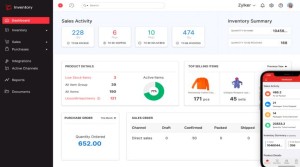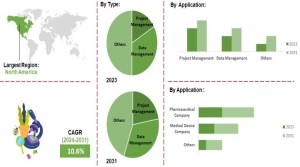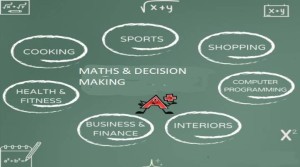How Emerging Technology is Changing Math Education?
Video game like learning is changing how we teach math. Instead of just looking at pictures in books, VR puts you right inside the lesson.
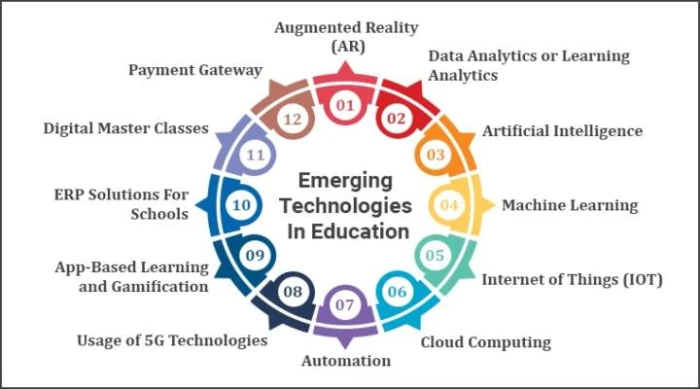
The education landscape continuously evolves, with technology playing an increasingly pivotal role. Math education, in particular, has seen significant transformations driven by advancements in emerging technologies. These changes enhance the learning experience and equip students with the skills necessary for the digital age. Here are some key characteristics of the emerging technologies.
Personalized Learning Through Adaptive Software
One of the most incredible things technology brings to math learning is the ability to make it fit each student's needs. Imagine a unique program that figures out how you learn math best and what you're good at or stuck on. Then, it gives you practice problems just right for you; like a personal math coach. These programs, like Khan Academy and Dream Box Learning, can help you understand more challenging issues when you're ready and help you know when you get stuck.
Interactive and Gamified Learning
The old way of teaching math can be tedious. But new games and websites are changing that. These things, like Prodigy and Math Blaster, make math problems like fun games. They even give you prizes and show you how you compare to others, which makes learning more exciting. This way, students will want to know more about math and remember it better.
Virtual and Augmented Reality
Video game like learning is changing how we teach math. Instead of just looking at pictures in books, VR puts you right inside the lesson. Imagine walking around a giant 3D triangle or seeing a challenging math problem come to life. AR lets you use your phone or tablet to add cool math to the real world. See floating shapes or play with 3D models - all on your screen. This makes learning fun and easier to understand because you can touch and play with math instead of just memorizing numbers.
Artificial Intelligence and Machine Learning
Intelligent computers and learning programs are changing the way we teach math. Programs like Carnegie Learning and Squirrel AI can act like personal tutors. They figure out what's challenging for each student and adjust the lessons on the spot. These programs can also check homework quickly and give students feedback immediately. This frees up teachers' time to explain things better instead of grading papers. These programs can also predict which students might need extra help, so, teachers can jump in before they fall behind.
Online Learning and MOOCs
Extensive online courses (like Coursera, edX, and Udemy) are making it easier for anyone to learn math, from simple counting to super-hard calculus. These websites have classes taught by famous teachers, and you can learn whenever you want and at your speed. No matter where you live or how busy you are, you can learn math online. Plus, there are online chat rooms where you can talk to other students and learn together.
Collaborative Tools and Social Learning
Emerging technologies are also enhancing collaborative learning in math education. Tools like Google Classroom, Microsoft Teams, and collaborative whiteboards enable students and teachers to work together seamlessly, even when they are not physically in the same location. These tools facilitate group work, peer tutoring, and real-time feedback, fostering a more interactive and cooperative learning environment.
Data Analytics and Learning Management Systems
Learning programs with fancy names like Blackboard and Canvas can track students' progress in class. This lets teachers see things like how far students progress, whether they are participating in activities, and their test scores. With this information, teachers can decide what to teach next, make changes to their lessons, and give extra help to students who need it. All of this helps students learn more.
Accessibility and Inclusivity
Emerging technologies are making math education more inclusive and accessible. Assistive technologies such as speech-to-text, text-to-speech, and screen readers support students with disabilities in accessing math content. Additionally, adaptive learning technologies can cater to diverse learning needs, including students with learning difficulties. This ensures that all students have equal opportunities to succeed in math.
Teacher Professional Development
Technology is transforming student learning and teacher professional development. Online training programs, webinars, and digital resources provide teachers with continuous learning opportunities and access to the latest instructional strategies. Professional Learning Networks (PLNs) and social media platforms enable educators to share best practices, collaborate, and stay updated on emerging trends in math education.
Challenges and Considerations
Even though using new tech to teach math can be helpful, there are some tricky parts, too. We must ensure all students can use these tools at school, no matter how much money their family has. Some kids might not have computers or tablets at home or need internet access. Also, teachers need extra training on using this technology in their lessons as best as possible. Keeping student information safe is also super important, so we need to ensure computers and programs are secure.
The Future of Math Education
Learning math might look different in the future. Computers and excellent new programs will be everywhere in schools, helping us learn. Imagine super-intelligent machines that can learn by themselves and understand tons of information. These will be a big deal for math class. There will also be special programs that can change how we learn based on what we're good at, making things more fun and exciting for everyone. Plus, with more focus on science, technology, engineering, and math (that's STEM), there will be even more ways to learn math and prepare for all the exciting jobs of the future.
This essay explores the impact of tech programs, virtual reality, digital twin technology, and digital learning on math education, providing an overall view of the future of this essential field.
Tech Programs in Math Education
Tech programs have become integral to modern math education. These programs include a range of software and applications designed to aid in teaching and learning mathematical concepts. One of the most significant benefits of tech programs is their ability to provide immediate feedback to students.
Moreover, tech programs often include gamification elements, making learning math more engaging and enjoyable. These programs can transform traditional math problems into interactive challenges that motivate students to practice more frequently. Additionally, tech programs can be customized to suit individual learning paces and styles, catering to the diverse needs of students in a classroom.
Virtual Reality in Math Education
Video game technology is being used in a new way to teach math. Imagine a world where you can step inside your math problems. Virtual reality, or VR, lets you do just that. With VR goggles, you can see and touch shapes and numbers in 3D, which can make it much easier to learn tricky math concepts. This is especially helpful for those confusing ideas that are hard to understand from pictures in books or on a board.
For instance, geometric shapes, graphs, and equations can be explored virtually, allowing students to see and manipulate them from different angles. Their comprehension and memory of mathematical ideas can be strengthened by this practical experience. Additionally, VR can simulate real-world scenarios where math is applied, such as architecture, engineering, and physics, providing students with practical examples of how math is used in various fields.
Digital Twin Technology in Math Education
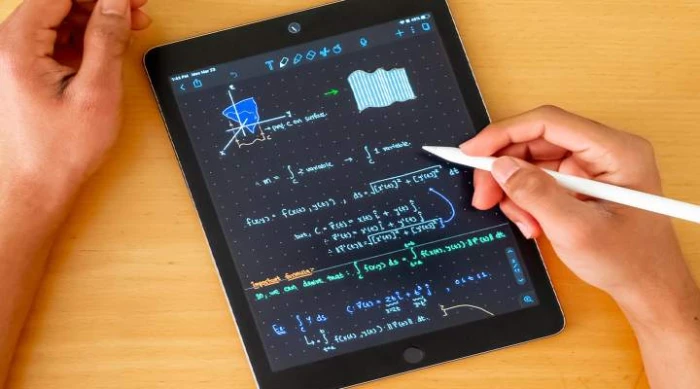
Digital twin technology, which creates virtual replicas of physical objects and systems, has entered math education. This technology allows students to observe and interact with digital models that behave like their real-world counterparts. In math education, digital twins can simulate complex systems and processes, making abstract mathematical concepts more tangible and understandable.
A digital twin of a bridge can demonstrate how mathematical principles such as load distribution and structural integrity are applied in engineering. Students can manipulate the digital twin to see how changes in design affect the overall structure, providing a deeper understanding of the underlying math. This interactive learning approach helps bridge the gap between theoretical math and its practical applications.
Digital Learning in Math Education
Digital learning encompasses a broad range of technologies and approaches that facilitate learning through digital means. In math education, digital learning tools such as online courses, interactive textbooks, and educational apps have revolutionized students' learning. With the freedom these tools offer, students can access resources from anywhere at any time and learn at their own pace.
Emerging Technology in Math Education
Integrating emerging technologies in math education marks a paradigm shift in teaching and learning. These technologies offer several advantages, including enhanced engagement, personalized learning, and practical applications of mathematical concepts.
Firstly, emerging technologies make learning math more engaging and interactive. Traditional math education often relies on rote memorization and repititive exercises, which can be tedious and disengaging for students. Tech programs, VR, and digital twin technology transform math education into a dynamic and interactive experience, making learning more enjoyable and motivating for students.
Secondly, these technologies support personalized learning. Every student learns differently, and traditional classroom settings often need help accomodating diverse learning needs. Emerging technologies, particularly adaptive learning platforms, provide customized learning experiences that cater to individual paces and styles, ensuring that all students have the opportunity to succeed.
Thirdly, emerging technologies bridge the gap between theoretical math and its practical applications. By simulating real-world scenarios and providing hands-on experiences, technologies like VR and digital twin technology help students see the relevance of math in various fields.
New and exciting tools are changing the way we learn math. These tools, like games and special computer programs, make learning more fun and engaging. These can also be changed to fit how you learn best. This way, you can learn things at a speed that feels comfortable for you. Plus, they can show you how math is used in the real world, making it more interesting. There might be some bumps along the road as we get used to these new tools, but the good definitely outweighs the bad. As these tools get even better, learning math will get even better too. This will help you be prepared for all the cool things you can do with computers and technology, and give you the skills you need to succeed in our ever-changing world.
Explore several calculators related to math calculations.
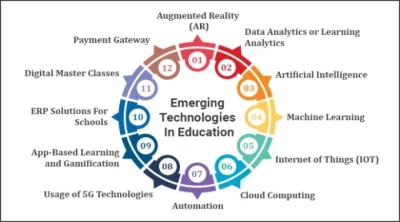
The education landscape continuously evolves, with technology playing an increasingly pivotal role. Math education, in particular, has seen significant transformations driven by advancements in emerging technologies. These changes enhance the learning experience and equip students with the skills necessary for the digital age. Here are some key characteristics of the emerging technologies.
Personalized Learning Through Adaptive Software
One of the most incredible things technology brings to math learning is the ability to make it fit each student's needs. Imagine a unique program that figures out how you learn math best and what you're good at or stuck on. Then, it gives you practice problems just right for you; like a personal math coach. These programs, like Khan Academy and Dream Box Learning, can help you understand more challenging issues when you're ready and help you know when you get stuck.
Interactive and Gamified Learning
The old way of teaching math can be tedious. But new games and websites are changing that. These things, like Prodigy and Math Blaster, make math problems like fun games. They even give you prizes and show you how you compare to others, which makes learning more exciting. This way, students will want to know more about math and remember it better.
Virtual and Augmented Reality
Video game like learning is changing how we teach math. Instead of just looking at pictures in books, VR puts you right inside the lesson. Imagine walking around a giant 3D triangle or seeing a challenging math problem come to life. AR lets you use your phone or tablet to add cool math to the real world. See floating shapes or play with 3D models - all on your screen. This makes learning fun and easier to understand because you can touch and play with math instead of just memorizing numbers.
Artificial Intelligence and Machine Learning
Intelligent computers and learning programs are changing the way we teach math. Programs like Carnegie Learning and Squirrel AI can act like personal tutors. They figure out what's challenging for each student and adjust the lessons on the spot. These programs can also check homework quickly and give students feedback immediately. This frees up teachers' time to explain things better instead of grading papers. These programs can also predict which students might need extra help, so, teachers can jump in before they fall behind.
Online Learning and MOOCs
Extensive online courses (like Coursera, edX, and Udemy) are making it easier for anyone to learn math, from simple counting to super-hard calculus. These websites have classes taught by famous teachers, and you can learn whenever you want and at your speed. No matter where you live or how busy you are, you can learn math online. Plus, there are online chat rooms where you can talk to other students and learn together.
Collaborative Tools and Social Learning
Emerging technologies are also enhancing collaborative learning in math education. Tools like Google Classroom, Microsoft Teams, and collaborative whiteboards enable students and teachers to work together seamlessly, even when they are not physically in the same location. These tools facilitate group work, peer tutoring, and real-time feedback, fostering a more interactive and cooperative learning environment.
Data Analytics and Learning Management Systems
Learning programs with fancy names like Blackboard and Canvas can track students' progress in class. This lets teachers see things like how far students progress, whether they are participating in activities, and their test scores. With this information, teachers can decide what to teach next, make changes to their lessons, and give extra help to students who need it. All of this helps students learn more.
Accessibility and Inclusivity
Emerging technologies are making math education more inclusive and accessible. Assistive technologies such as speech-to-text, text-to-speech, and screen readers support students with disabilities in accessing math content. Additionally, adaptive learning technologies can cater to diverse learning needs, including students with learning difficulties. This ensures that all students have equal opportunities to succeed in math.
Teacher Professional Development
Technology is transforming student learning and teacher professional development. Online training programs, webinars, and digital resources provide teachers with continuous learning opportunities and access to the latest instructional strategies. Professional Learning Networks (PLNs) and social media platforms enable educators to share best practices, collaborate, and stay updated on emerging trends in math education.
Challenges and Considerations
Even though using new tech to teach math can be helpful, there are some tricky parts, too. We must ensure all students can use these tools at school, no matter how much money their family has. Some kids might not have computers or tablets at home or need internet access. Also, teachers need extra training on using this technology in their lessons as best as possible. Keeping student information safe is also super important, so we need to ensure computers and programs are secure.
The Future of Math Education
Learning math might look different in the future. Computers and excellent new programs will be everywhere in schools, helping us learn. Imagine super-intelligent machines that can learn by themselves and understand tons of information. These will be a big deal for math class. There will also be special programs that can change how we learn based on what we're good at, making things more fun and exciting for everyone. Plus, with more focus on science, technology, engineering, and math (that's STEM), there will be even more ways to learn math and prepare for all the exciting jobs of the future.
This essay explores the impact of tech programs, virtual reality, digital twin technology, and digital learning on math education, providing an overall view of the future of this essential field.
Tech Programs in Math Education
Tech programs have become integral to modern math education. These programs include a range of software and applications designed to aid in teaching and learning mathematical concepts. One of the most significant benefits of tech programs is their ability to provide immediate feedback to students.
Moreover, tech programs often include gamification elements, making learning math more engaging and enjoyable. These programs can transform traditional math problems into interactive challenges that motivate students to practice more frequently. Additionally, tech programs can be customized to suit individual learning paces and styles, catering to the diverse needs of students in a classroom.
Virtual Reality in Math Education
Video game technology is being used in a new way to teach math. Imagine a world where you can step inside your math problems. Virtual reality, or VR, lets you do just that. With VR goggles, you can see and touch shapes and numbers in 3D, which can make it much easier to learn tricky math concepts. This is especially helpful for those confusing ideas that are hard to understand from pictures in books or on a board.
For instance, geometric shapes, graphs, and equations can be explored virtually, allowing students to see and manipulate them from different angles. Their comprehension and memory of mathematical ideas can be strengthened by this practical experience. Additionally, VR can simulate real-world scenarios where math is applied, such as architecture, engineering, and physics, providing students with practical examples of how math is used in various fields.
Digital Twin Technology in Math Education
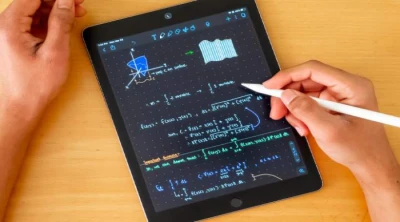
Digital twin technology, which creates virtual replicas of physical objects and systems, has entered math education. This technology allows students to observe and interact with digital models that behave like their real-world counterparts. In math education, digital twins can simulate complex systems and processes, making abstract mathematical concepts more tangible and understandable.
A digital twin of a bridge can demonstrate how mathematical principles such as load distribution and structural integrity are applied in engineering. Students can manipulate the digital twin to see how changes in design affect the overall structure, providing a deeper understanding of the underlying math. This interactive learning approach helps bridge the gap between theoretical math and its practical applications.
Digital Learning in Math Education
Digital learning encompasses a broad range of technologies and approaches that facilitate learning through digital means. In math education, digital learning tools such as online courses, interactive textbooks, and educational apps have revolutionized students' learning. With the freedom these tools offer, students can access resources from anywhere at any time and learn at their own pace.
Emerging Technology in Math Education
Integrating emerging technologies in math education marks a paradigm shift in teaching and learning. These technologies offer several advantages, including enhanced engagement, personalized learning, and practical applications of mathematical concepts.
Firstly, emerging technologies make learning math more engaging and interactive. Traditional math education often relies on rote memorization and repititive exercises, which can be tedious and disengaging for students. Tech programs, VR, and digital twin technology transform math education into a dynamic and interactive experience, making learning more enjoyable and motivating for students.
Secondly, these technologies support personalized learning. Every student learns differently, and traditional classroom settings often need help accomodating diverse learning needs. Emerging technologies, particularly adaptive learning platforms, provide customized learning experiences that cater to individual paces and styles, ensuring that all students have the opportunity to succeed.
Thirdly, emerging technologies bridge the gap between theoretical math and its practical applications. By simulating real-world scenarios and providing hands-on experiences, technologies like VR and digital twin technology help students see the relevance of math in various fields.
New and exciting tools are changing the way we learn math. These tools, like games and special computer programs, make learning more fun and engaging. These can also be changed to fit how you learn best. This way, you can learn things at a speed that feels comfortable for you. Plus, they can show you how math is used in the real world, making it more interesting. There might be some bumps along the road as we get used to these new tools, but the good definitely outweighs the bad. As these tools get even better, learning math will get even better too. This will help you be prepared for all the cool things you can do with computers and technology, and give you the skills you need to succeed in our ever-changing world.
Explore several calculators related to math calculations.
Conversation
Latest Blogs
© Blog CoolCalculator, Explore CoolCalculator, your destination for the latest insights, tips, and updates on the world of online calculators. Stay informed and make your calculations smarter with our blog. ,
Designed
by Saad Media Team , Team Lead M.Rizwan Akhtar




